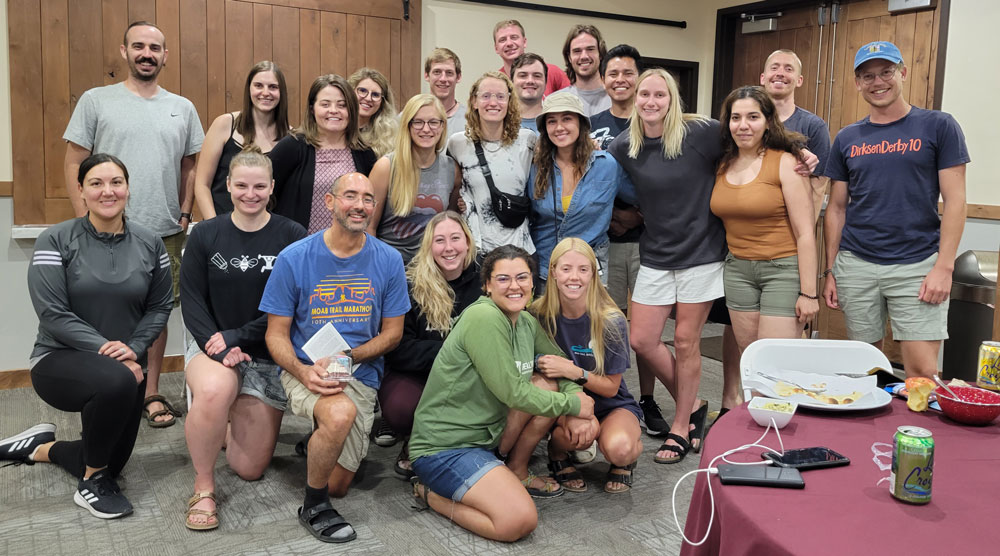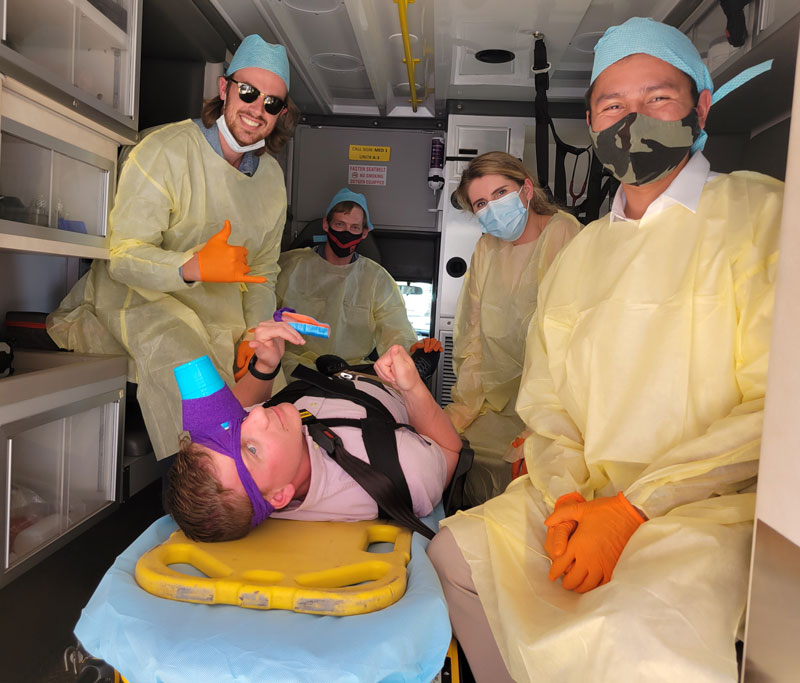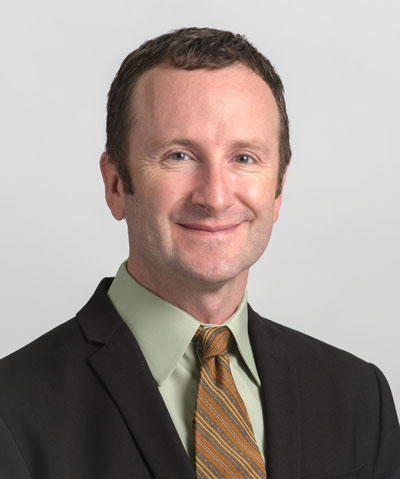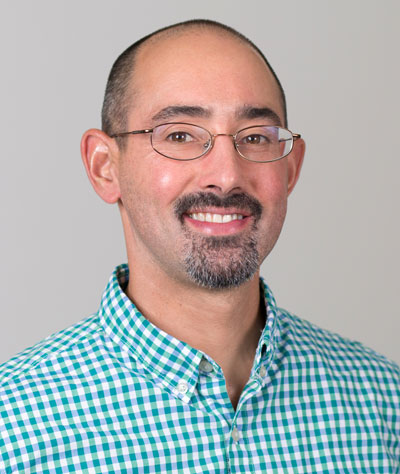Voices of U of U Health
The Classroom of Rural Experience
Unless you’ve been there, you don’t get it. Statistics don’t mean much when you’re standing, virtually alone, in the dusty desert landscapes of rural Utah. But that’s when you see it. Its vastness. Its emptiness. Only then do the statistics begin to make sense.
Census data from 2020 peg Utah as the fastest-growing state in the nation. Yet it ranks 48th for primary care physicians per 100,000 residents. That’s bad. But out there in the desert, away from the glittering cities nestled on the western slopes of the Wasatch Mountains, it’s even worse. And it’s our job to fix it.
Our Strategy
As the state’s only academic medical center, University of Utah Health plays a vital role in bringing essential health care—and health education—to both rural and urban areas of our state.
A multiplicity of factors underlies physician recruitment and retention in tribal, rural, and even urban underserved (TRU) communities. We are developing an evidence-based curriculum to prepare medical trainees to practice medicine in these areas. How and what we teach serves both the evolving needs of our learners and the primary care needs of TRU populations.

A $7 million Health Resources and Services Administration (HRSA)grant awarded in 2020 helps us leverage medical education to address primary care physician shortages in Utah’s most underserved communities. Called Tribal, Rural, and Underserved Medical Education (TRUE), the work is anchored by four core activities:
- Enhanced medical school recruitment and admissions opportunities for students from TRU communities.
- High-quality, longitudinal curricula specific to practicing medicine in TRU communities.
- Immersive clinical learning experiences with supportive TRU community physician preceptors.
- Mutually beneficial partnerships within TRU community partners to facilitate community-based medical education.
Customized Medical Curriculum
Even amidst the pandemic, 20 passionate MS1s began a new four-year longitudinal graduate certificate program: Tribal, Rural, and Underserved Medical Education (TRUE). Many of them come from rural areas, and all are dedicated to learning about and helping TRU communities realize better health. The curriculum addresses topics like population health, social determinants of health, and health inequity as a driver of observed health disparities. It also exposes students to health systems, delivery models, and resources—or lack thereof—in TRU communities.
By May 2021, the students had completed two semesters of content facilitated by more than 40 experts from U of U Health, health-related state agencies, and non-profits.
Immersive Training in the Navajo Nation
With newfound knowledge and skill, the students were ready for first-hand exploration of rural medicine. In July 2021, they joined a cohort of other students for a one-week summer experience on the Utah portion of the Navajo Nation. a narrow strip of desert in southwest Utah.
Over the years, the collaborative relationship between the University of Utah and Utah Navajo Health Systems (UNHS) has grown strong. Built on a trusting, reciprocal partnership spanning nearly two decades, it allowed the TRUE Program to offer a rich rural immersion experience. UNHS clinical staff and locals shared their knowledge with the students, taking time to demonstrate their commitment to the Navajo community and San Juan County.

The programming—primarily done at Montezuma Creek Community Health Center—included presentations from primary care physicians, APCs, dieticians, diabetes care coordinators, integrated behavioral health practitioners, emergency medicine providers, and a Navajo traditional healer.
Students learned about the cohesiveness and cultural strengths of the Diné—Navajo people. They saw how community assets allowed a responsive, state-of-the-art health care system to grow in the heart of the desert. They witnessed the impressive agility, unwavering adroitness, and deep compassion that ensured a successful response to the COVID-19 pandemic among the Diné.
The power of the rural experience was not lost on the TRUE students. “There’s no other way to truly appreciate tribal, rural, and underserved medicine than to experience the conditions firsthand,” reported one. “To say one wants to practice in such an area is much different than the experience of living in that area. I think we got a little taste of that. It was a remarkable experience to explore the area, get to know classmates, and bond as a program. It was such an impactful experience. So many good memories!”
Succeeding in Rural Primary Care Settings
Encouraged by early successes of the TRU medical education program, HRSA’s Bureau of Health Workforce recently awarded $5.2 million in additional funding to further advance TRUE program aims.
It’s no secret that health care and health education gaps exist. But studies demonstrate predictable factors influencing recruitment and retention in places like the Navajo Nation. Policies and programs aimed at staffing rural areas with primary care physicians should focus on selecting the right health professional students and infusing their formal training with curriculum and experiences necessary to succeed in those settings.

